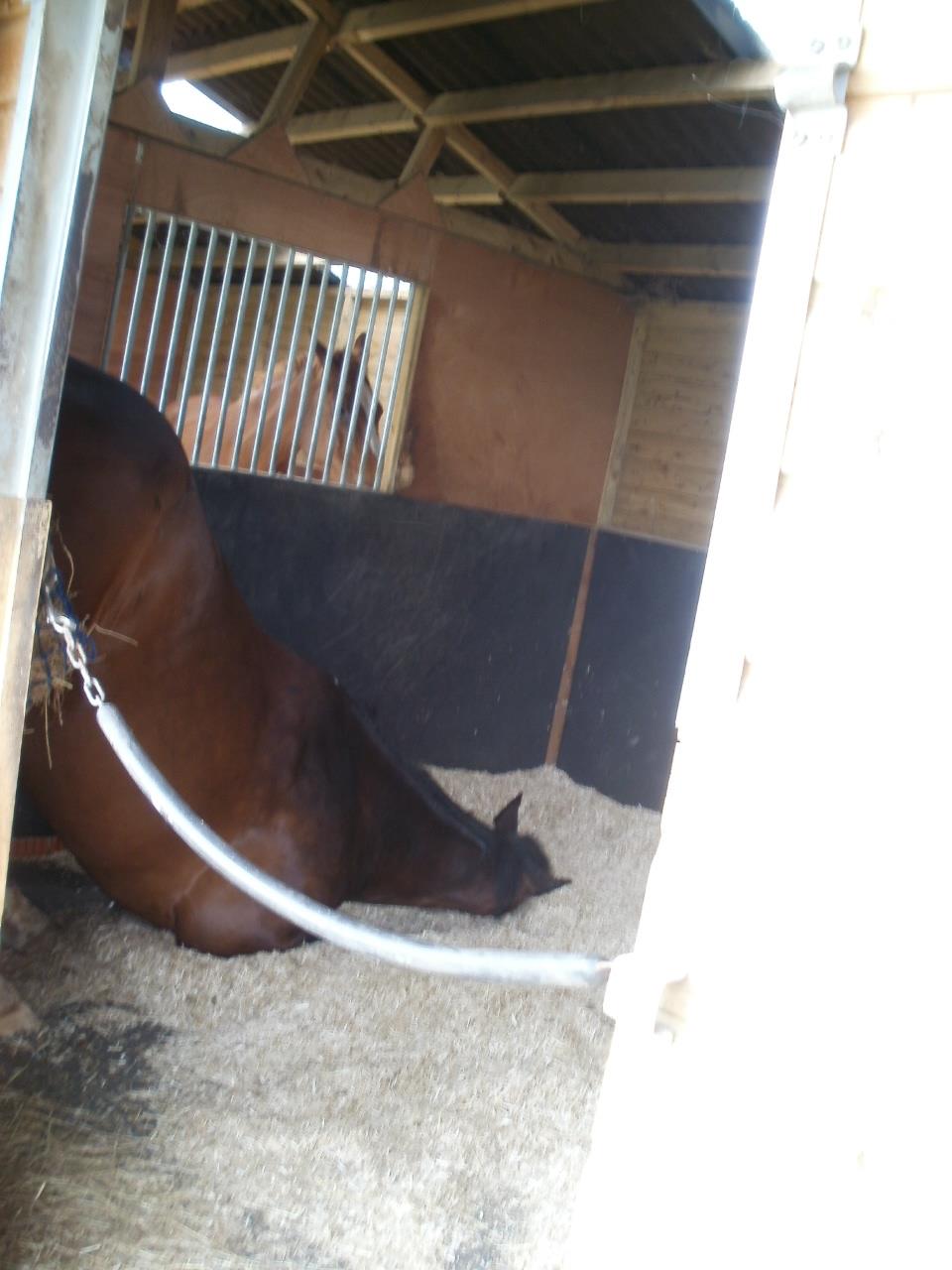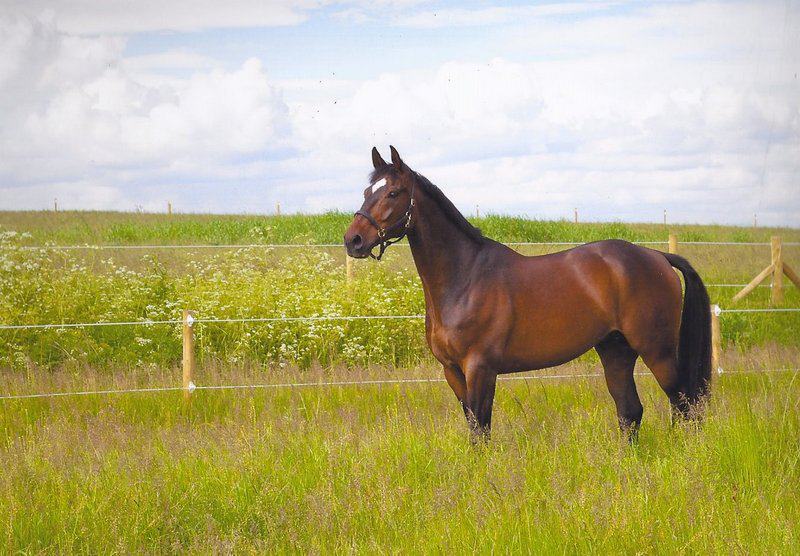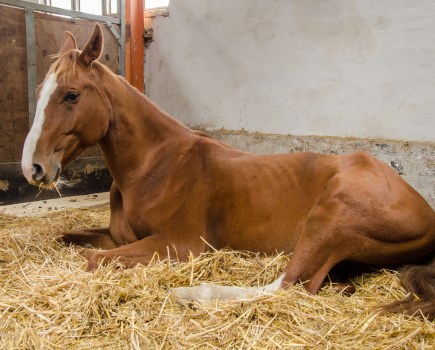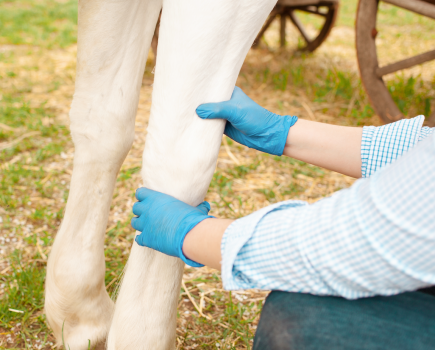Dr Imogen Burrows BVetMed CertAVP(EM) MRCVS tells us all about her experience of one of her last clinical cases before she heads off on maternity leave.
Equine practice is an especially challenging discipline to work in when you’re pregnant. Spending the majority of my working time out on the road visiting clients and their horses at their own yards means that I often don’t have the luxury of a nurse at hand to help with horse handling, so life can be unpredictable at best.
Fortunately, I’ve had the privilege of working within an exceptionally supportive practice throughout my pregnancy and it’s allowed me to work well into my seventh month of pregnancy. Having said that, I’ve taken a significant step back from clinical work after the New Year, and have mainly been working with horses either within the clinic, or only with exceptional cases out at yards.
One of my very special patients is a lovely old boy called Rasputin. Already a firm fan of our clinic, Ras began his veterinary misadventures aged seven when he broke his leg. Luckily for his very tolerant and loving owner, he’s not only a very laid-back and personable horse, but a very good patient overall. After a period of box rest, he remarkably came sound and restarted his ridden career.
Of course, the road to true equine love certainly doesn’t run smoothly and he’s been somewhat of a frequent flyer in earning stacks of veterinary ‘air miles’ along the way. Poor old Ras has even had symptoms of narcolepsy – a disease that means he falls asleep sporadically and can occasionally get himself into a spot of bother.

Ras has even had symptoms of narcolepsy – a disease that means he falls asleep sporadically and can occasionally get himself into a spot of bother.
Fast forward a few years and Ras came to me with some odd behavioural changes. His owner noticed he wasn’t settling in his stable and appeared more spooky than normal during rides. I examined his eyes as part of his health check to investigate what was going on.
Unfortunately, it became clear that he’d slowly been developing cataracts, which seemed the most likely explanation to the change in his behaviour. While he still had normal reflexes to light, and responses to sudden movement in front of his eyes on both sides, the cataracts were obviously within his line of sight. I felt he still had reasonable vision, but in such cases it’s possible that the light entering the eye bounces at odd angles onto the retina, rather than in a direct straight line. This can mean the horse becomes dazzled by the normal amount of light entering the eye, causing him to spook. It’s not an unusual problem reported by owners.
Initially the cataracts were discrete, clearly outlined and were situated in the back part of the lens, just below the lens capsule. A large amount of the retina was visible during his eye examination and this is generally consistent with a reasonable visual ability. We made a plan to monitor Ras’s eyes every six months to keep an ‘eye’ on them (excuse the pun).
This brings me to my visit yesterday. Ras’s owner called me as she’d become increasingly worried about the possibility of the cataracts degenerating. She told me that Ras had recently been much less confident while hacking out (he’s usually such a forward-going chap) and he seemed much more timid and unsure of himself.
Sadly, my examination served to confirm his owner’s suspicions. While the old cataracts hadn’t really changed enormously, they had become more dense and consequently, harder to see through. Unfortunately, both eyes had formed new cataracts on the front portion of the lenses. These newer cataracts had formed quickly, appeared to be very solid and extended over quite a proportion of the front of the lens, just below the capsule.
My conclusion was not positive. The new cataracts that had formed meant that I estimated I could only see around one fith to a quarter of the total amount of retina through the lens. Similarly, this is highly suggestive of significant visual deterioration for Ras, leaving him with only around a fifth of his normal vision, particularly in bright sunny conditions.
After a heartbreaking discussion, the owner has come to terms with the fact that continuing his ridden work may no longer be the right thing to do. His condition means it’s also likely to be unsafe for both him and his riders. This is huge adjustment for his owner, but at 20-years young, he has lived more than his nine lives already – and is still in fantastic health, enjoying his life as much as ever!
Paying careful attention to subtle changes in behaviour is important and worthy of routine health checks. Assessing your horse’s sight is not without complication, but critical when considering the safety of your horse, yourself and any other handlers or riders. Loss of sight can become an insurance issue. It can invalidate your third party cover if insurers are unaware of such issues and an accident occurs that’s determined to have occurred due to visual impairment. If you have any concerns at all, just ask your vet to pop in and check your horse’s eyes for any abnormalities.









